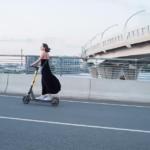The Evolution of Modern Communication: From Letters to Digital Dialogues
In our interconnected world, communication has transformed dramatically over the past few decades. This article explores the evolution of communication from traditional forms, like letters and face-to-face interactions, to modern digital dialogues facilitated by social media, messaging apps, and video conferencing platforms. Understanding this evolution sheds light on how these changes impact our relationships, businesses, and even individual identities.
Historical Context: The Rise of Written Communication
The Birth of Written Language
Written communication dates back thousands of years, with early examples like cuneiform in ancient Mesopotamia and hieroglyphics in Egypt. These forms of writing allowed for the recording of history, trade transactions, and personal messages. The invention of the printing press in the 15th century by Johannes Gutenberg democratized written communication, making books and literature accessible to the masses and paving the way for the Enlightenment and the modern world.
The Art of Letter Writing
Letter writing became a prominent form of communication in the 18th and 19th centuries, with individuals composing long, thoughtful letters that conveyed emotions, opinions, and essential news. Famous letter writers like John Adams and Mary Wollstonecraft used the medium to discuss philosophy, politics, and personal struggles, influencing their contemporaries and future generations.
The Impact of the Telephone
Invention and Adoption
The telephone revolutionized communication in the late 19th century, enabling people to speak directly with one another over long distances. Alexander Graham Bell’s invention in 1876 marked the beginning of real-time voice communication, leading to a more personal, immediate form of dialogue. By the early 20th century, telephones became commonplace in homes and businesses, changing the nature of personal and professional relationships.
Social Interactions
The adoption of the telephone shifted how people interacted. Conversations could occur without the need for physical presence, fostering long-distance relationships. However, this immediacy also led to a decline in written correspondence, as fewer people took the time to write letters. The charm of a handwritten note began to fade, replaced by the convenience of voice communication.
The Advent of Television and Mass Media
Communication as Entertainment
The mid-20th century introduced television as a new medium for communication. It transformed how information was disseminated and consumed. News broadcasts, talk shows, and dramas became a primary source of information and entertainment, capturing the public’s attention and reshaping cultural narratives.
The Impersonal Nature of Mass Media
While television and radio brought people together around shared experiences, they also introduced a more distant form of communication. Viewers experienced news as passive consumers, leading to a sense of disconnection from the subjects being discussed. The one-way nature of television contrasted with the interactive potential of earlier communication forms.
The Internet Revolution
The Rise of Digital Communication
The invention of the internet in the late 20th century marked a turning point in communication history. Email emerged as a preferred method for both personal and professional correspondence, allowing for instantaneous exchange of information across the globe. This shift not only improved communication efficiency but also altered social norms regarding timeliness and response times.
Online Socialization
As the internet evolved, so did online socialization. Social media platforms like MySpace, Facebook, and Twitter created new avenues for interaction. Unlike traditional communication, these platforms allowed individuals to connect, share, and engage with a broader audience. Self-expression became central, as users curated their online identities.
The Era of Instant Messaging
Instant Connectivity
The late 1990s and early 2000s saw the rise of instant messaging applications like AOL Instant Messenger and later WhatsApp and Instagram DMs. This real-time communication option revolutionized how people interacted. Users could send messages instantly and also share images and videos, fostering richer communication.
Impacts on Relationships
Instant messaging altered relationship dynamics, contributing to both positive and negative effects. The convenience of communicating anytime and anywhere made maintaining connections easier. However, it also blurred the lines between personal and professional lives, leading to issues like burnout and the challenge of multitasking in conversations.
Video Conferencing: The New Face of Communication
Remote Communication
Video conferencing platforms like Zoom and Microsoft Teams became indispensable during the COVID-19 pandemic. The necessity of remote work and social distancing accelerated the adoption of these tools, transforming how agendas were set and meetings were conducted. Participants could see one another, adding a visual element that was often missing in emails or phone calls.
The Future of Professional Communication
With the normalization of video meetings, businesses and individuals have had to adapt. Video calls offer personal connection and can foster better engagement than traditional email chains. However, they can also lead to "Zoom fatigue," where the continuous demand for virtual presence becomes overwhelming.
The Influence of Social Media
New Forms of Expression
Social media has diverged from traditional communication methods, allowing users to express themselves through posts, tweets, and stories. Platforms like TikTok and Instagram emphasize visual communication and creativity, reshaping how narratives are shared.
Mental Health Implications
While social media fosters connections, it can also pose challenges. The pressure to maintain an online persona and the prevalence of cyberbullying have led to mental health issues among users, particularly younger generations. Understanding the impact of these platforms is essential for navigating our modern communication landscape.
The Interplay of Communication and Culture
Globalization and Cultural Exchange
The evolution of communication has led to unparalleled cultural exchange. Individuals can connect with others across the globe, fostering friendships and collaborations. This interconnectedness has enriched societies but has also led to cultural homogenization.
The Challenge of Language
As communication becomes more global, language barriers can arise. While translation technologies like Google Translate have improved, nuances and cultural contexts are often lost in translation. The importance of cultural sensitivity in communication cannot be overstated.
Ethical Considerations in Modern Communication
Misinformation and Disinformation
The ease of sharing information online has led to the proliferation of misinformation. Social media platforms struggle to balance free expression and the need for accurate information. The consequences of misinformation can be severe, impacting elections, public health responses, and personal relationships.
Privacy Concerns
Another significant concern in modern communication is privacy. With the vast amounts of personal data shared online, individuals face risks related to data breaches and surveillance. Understanding privacy settings and exercising caution in sharing personal information is crucial.
The Future of Communication
Emerging Technologies
As technology evolves, communication methods will continue to change. Artificial Intelligence (AI) and virtual reality (VR) are on the horizon, promising to further enhance interpersonal connections. Virtual hangouts and AI-driven chatbots may redefine how we engage with one another.
Balancing Digital and Human Connection
Despite rapid technological advancements, the essence of communication—human connection—remains paramount. It will be essential to strike a balance between digitization and genuine human interaction, ensuring that technology enhances rather than diminishes our interpersonal experience.
Conclusion: Embracing the Complexity of Communication
The evolution of communication from letters to digital dialogues has been a transformative journey, shaped by cultural, technological, and social influences. As we navigate this complex landscape, recognizing the implications of these changes on our relationships, health, and identity is essential. Moving forward, let us embrace both the opportunities and challenges presented by modern communication, ensuring that our dialogues remain meaningful, authentic, and connecting.
Footnotes
- Harris, M. (2010). The Evolution of Communication: Written Language to Digital Age. Journal of Communication Research.
- Smith, J. (2016). New Media and Social Communication. Cambridge University Press.
- Thompson, R. (2017). "The Role of Instant Messaging in Modern Communication." Journal of Digital Media.
- Johnson, L. (2021). Bridging Cultures: Communication in a Globalized World. Routledge.
- Lee, K. (2022). "Mental Health and Social Media: A Double-Edged Sword." Harvard Mental Health Letter.
This article serves as an overview of the vastly changing landscape of communication, offering insight into how these shifts affect our daily lives and broader societal structures. If you’d like to explore specific sections further or adjust the focus, I’d be delighted to assist!


























Add Comment